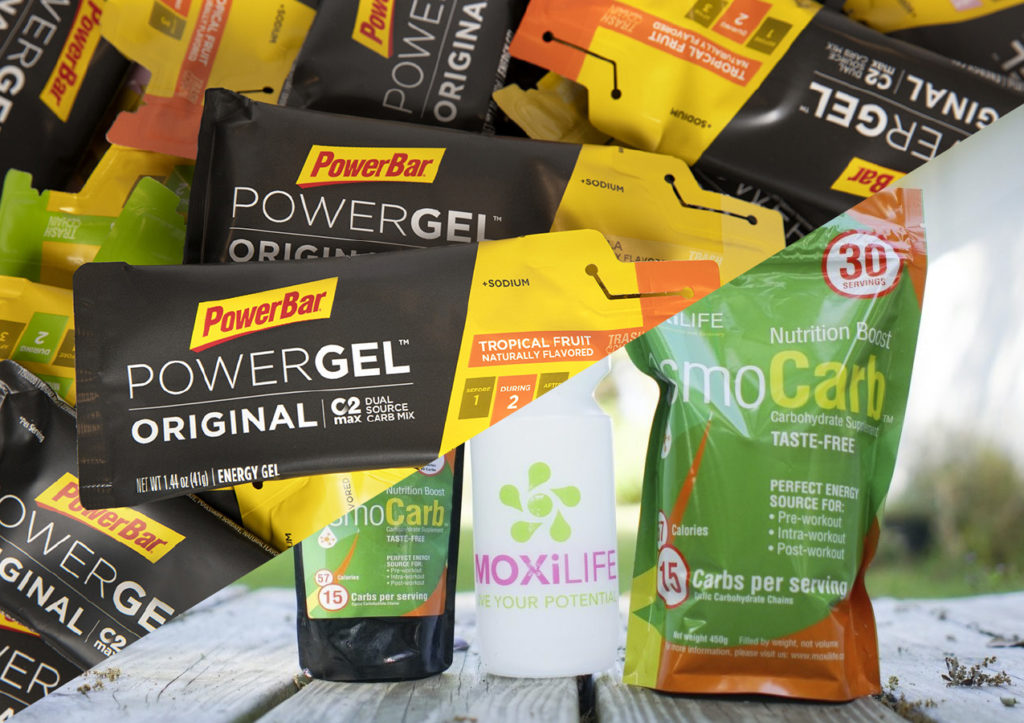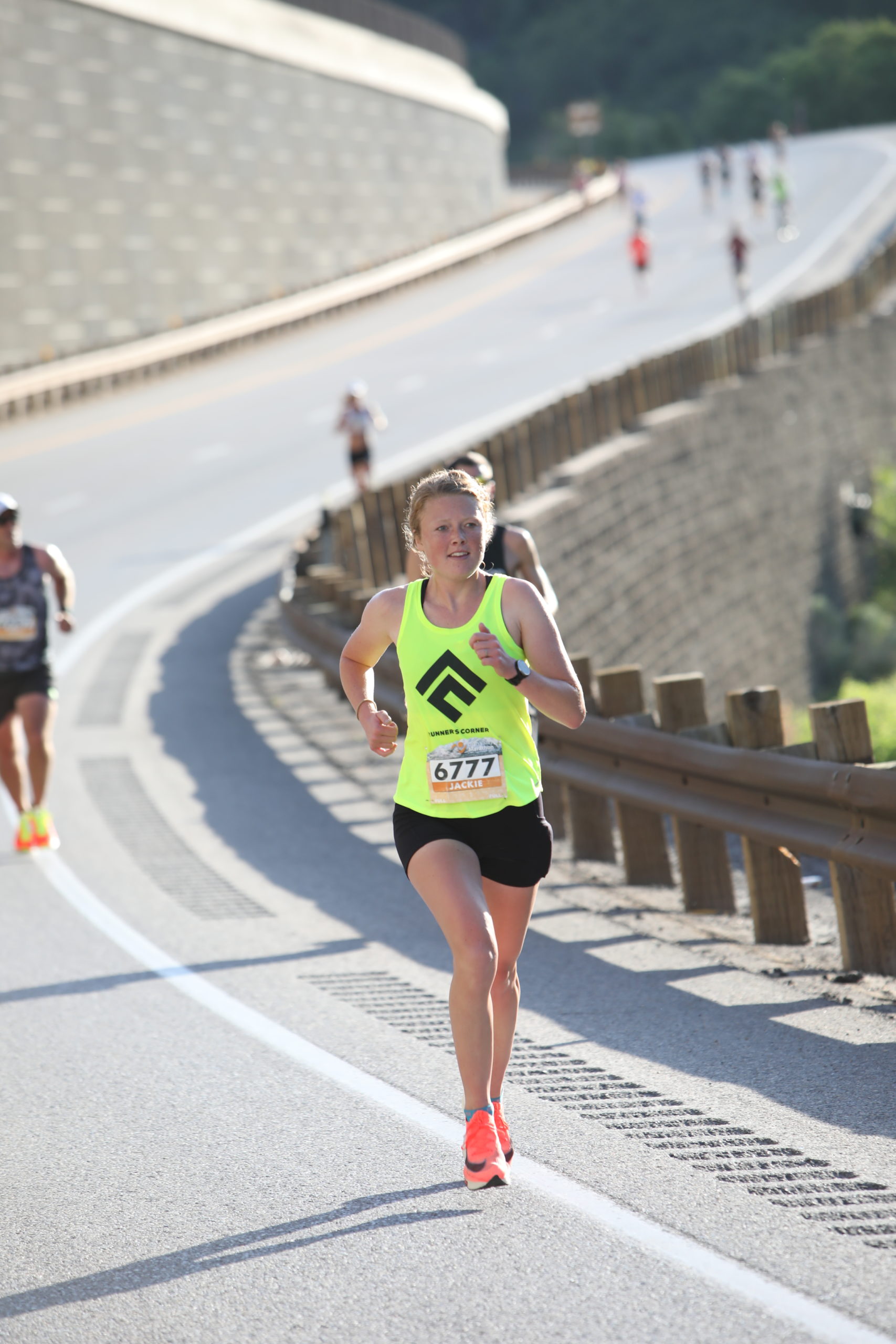To Drink Or To Eat?

To Drink Or To Eat? Choosing between carbohydrate beverages and sports gels/snacks is a question endurance athletes ask themselves on a continuous basis.
Quickly after my collegiate running career ended, I excitedly jumped into the world of marathon and ultra-marathon running. I remember staring at the rows of sports nutrition products at my local running store, wondering which ones would be the best for my stomach, my budget, and of course my performance. It felt overwhelming at first, but with a bit of education and experimentation, I’ve been able to successfully find an arsenal of products to rely on for race day.
One of the biggest questions for athletes in regard to nutrition products is whether or not the are to drink or to eat their fuel through a carbohydrate beverage and/or a sports gel. The answer? It depends!
It is recommended that endurance athletes consume between 30-60 grams of carbohydrate per hour of activity for runs, bikes, and swims lasting longer than 60 minutes. How you get there is up to you. Here are a few basic plans an athlete may choose to follow to meet that requirement:
- Fuel every 30-45 minutes with 20-30g/carbohydrate. Athletes that follow this pattern typically rely on gels or snacks (i.e crackers, potatoes, gummy candy, etc.) to meet their needs.
- Fuel continuously, with small portions of carbohydrate (click here to learn about macronutrients) throughout the entire race. Athletes that follow this pattern typically rely on a carbohydrate beverage for both their fueling & hydration needs.
- Some kind of mix of the two. Athletes who follow this pattern may keep a carbohydrate beverage in their bottles to sip on, but additionally take gels or snacks every 45-60 minutes to maintain glucose levels during activity.
When asking yourself what to drink or to eat here are 4 key things to consider:
Sources Of Carbohydrates
Our bodies utilize carbohydrates best during exercise when it comes from 2 different sources (think glucose, fructose, sucrose, maltodextrin, or brown rice syrup). Many products on the market choose to use fructose + maltodextrin for their 2 carbohydrate sources. The one issue with this combination is that fructose can often cause tummy troubles for athletes. Fructose requires an additional transporter in order to be utilized for energy in our bodies, meaning that our body has to work a little harder to obtain energy from fructose than from other carbohydrate sources. As you can imagine, this is not an ideal situation when you’re trying to focus on chasing down the next competitor in the middle of your triathlon or other endurance events.
- Bottom line: Choose products that use a combination of glucose, sucrose, maltodextrin, or brown rice syrup for fuel.
Osmolality Matters
Osmolality refers to the concentration of solutes (think carbohydrates and electrolytes) in a given solution. Our bodies prefer sports fuel that either matches the osmolality of our blood, or is lower than the osmolality of our blood. If we give our body a product that is highly concentrated with carbohydrates & electrolytes, the natural response of our body is to dilute the concentration of the beverage or gel we consumed using water from the existing cells in our body. This response can effectively dehydrate us, which is an ironic phenomenon for athletes looking to maintain optimal levels of hydration during an activity!
- Note: Most sports gels are meant to be taken with water in order to avoid this issue. Gels such as Maurten and SIS Isotonic gels are exceptions to this rule and do not need to be taken with water in order to be optimally absorbed in the body.
- Bottom line: Choose carbohydrate/electrolyte beverages with optimal levels of osmolality. Here are a few guidelines to help you know if a beverage fits the requirements:
- 3-4% carb solution (7-9 g/cho per 8 oz)
- 180-225 mg sodium
- 60-75 mg potassium
- Examples of carbohydrate/electrolyte beverages with optimal osmolality: OSMO hydration, Skratch Labs, Clif Shot Electrolyte Drink, GU Hydration Drink Mix, and Bonk Breaker Real Hydration
- With that said, many athletes find success with highly concentrated carbohydrate beverages such as Tailwind, Gatorade, Powerade, Hammer Heed, etc. While I wouldn’t initially recommend these products, I’m not here to tell you not to use them if you have found success with them.
Palate Fatigue and Convenience
Palate fatigue refers to the need for variety in sports nutrition products during a given activity. During a 3-4 hour bike ride, you’re probably not going to be stoked to have 8 gels with the exact same flavor and texture. It is important to find a variety of products you like and that work together in order to avoid any feelings of “not wanting to eat” the very fuel that will carry you to the finish line feeling strong and fast.
- Choosing a combination of foods and beverages that are convenient for you to access and carry with you is an important factor to consider. You may find it easier to consume gels and snacks on the bike and just sip a carbohydrate beverage on your swim/run (or vice versa).
- Bottom line: Choosing a variety of sports nutrition products you like and that are convenient for you to use will help you stay motivated to fuel properly, even when you aren’t in the mood to eat towards the end of your activity. This will help prevent any nutrition or hydration bonks that could keep you from achieving your goals.
Hydration
Regardless of the method of fueling you choose to pursue (ie. carbohydrate beverages, gels, and/or snacks), you must not forget to hydrate! Electrolyte beverages are best for keeping your body hydrated throughout your activity and should follow the recommendations noted under (#2 Osmolality matters). Keeping your body hydrated will not only allow your muscles to perform at their best, but it will also help your body avoid any GI discomfort associated with endurance fueling.
- Bottom line: Proper hydration with an electrolyte beverage will help you perform at your best.
In conclusion, successful endurance athletes of all levels may use any combination of the nutrition plans and considerations listed above. Dialing in your plan is a personalized endeavor. Utilize the best evidence-based nutrition information available, but also allow yourself to experiment to find your individual recipe for success, even if that recipe is different from the norm. My best advice is to train like you will race in regards to nutrition – don’t leave any surprises for the starting line. Good luck!
—
References
- Sims, D. T. (2016). Sport-Specific Fueling. In ROAR: How to match your food and fitness to your female physiology for optimum performance, great health, and a strong, lean, body for life. (p. 194-196). New York, NY: Rodale Books.
- Thomas DT, Erdman KA, Burke LM. Position of the Academy of Nutrition and Dietetics, Dietitians of Canada, and the American College of Sports Medicine: Nutrition and Athletic Performance. J Acad Nutr Diet. 2016 Mar;116(3):501-528. doi: 10.1016/j.jand.2015.12.006. Erratum in: J Acad Nutr Diet. 2017 Jan;117(1):146. PMID: 26920240.
- Baker LB, Jeukendrup AE. Optimal Composition of Fluid-Replacement Beverages. 2014 April. doi: 10.1002/cphy.c130014.

Jackie Hendrickson RD, MPH is a registered dietitian with a Masters Degree in public health nutrition from Utah State University. Jackie is the owner of Enduura Nutrition and loves coaching her athletes to their athletic potential through sustainable training & nutrition principles. She is an avid road & trail marathoner with a background in collegiate track, cross country, and competitive swimming. Jackie and her husband, Adam, were teammates in college and continue to pursue their running goals together. They live in beautiful Ogden, Utah with their 2 year old son, Lincoln.









